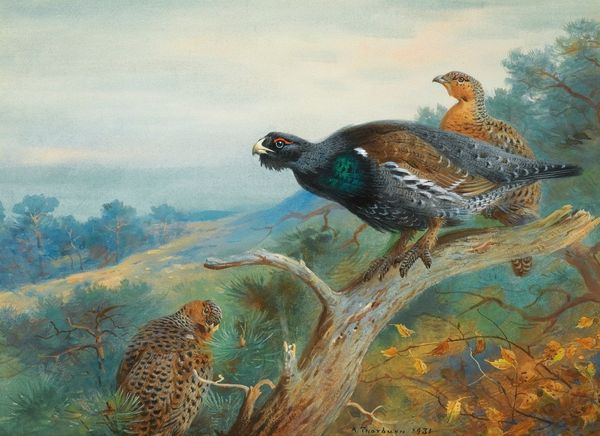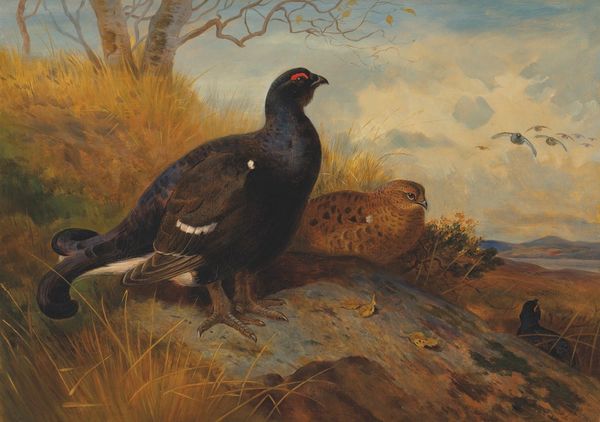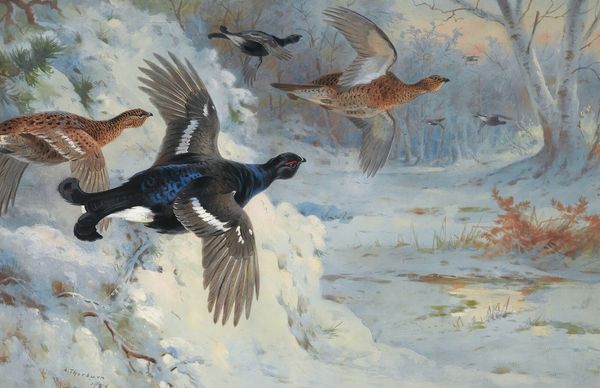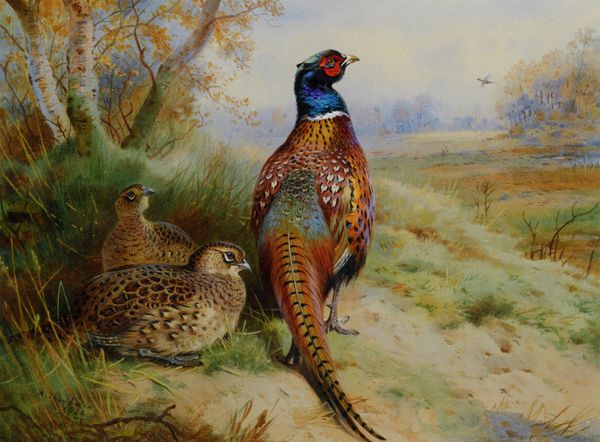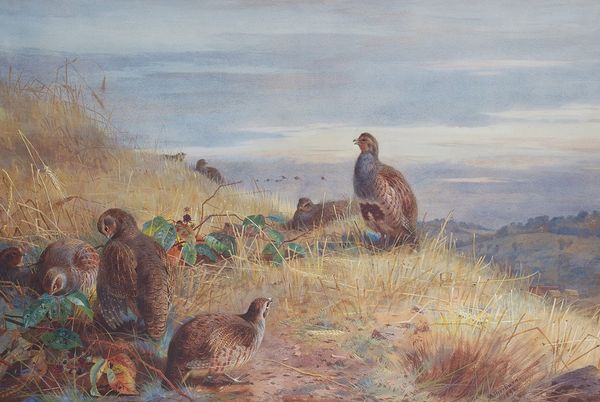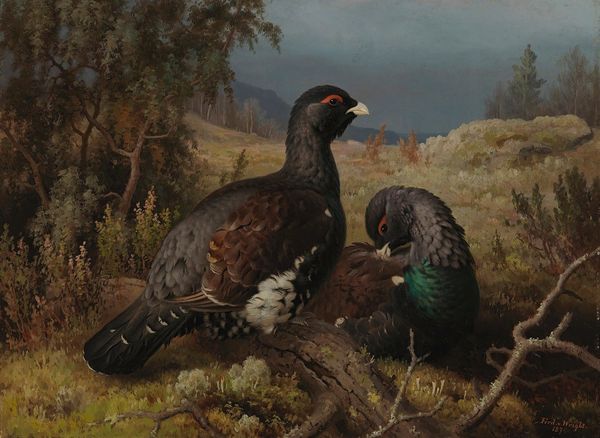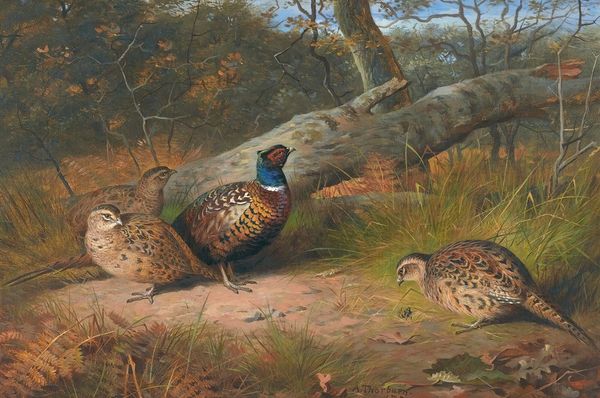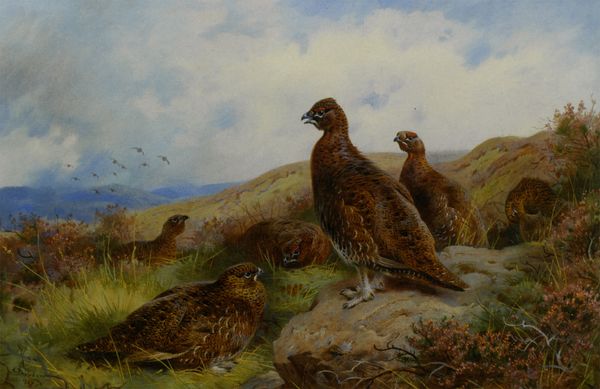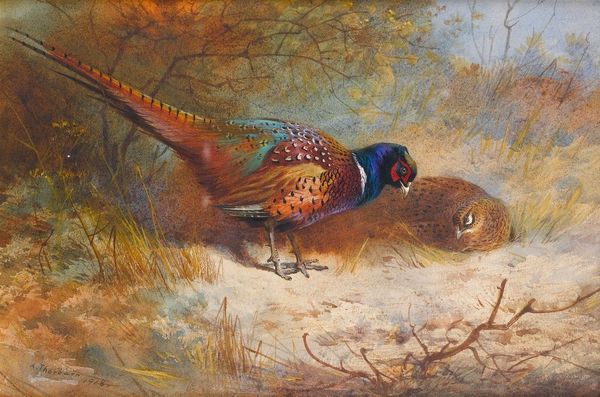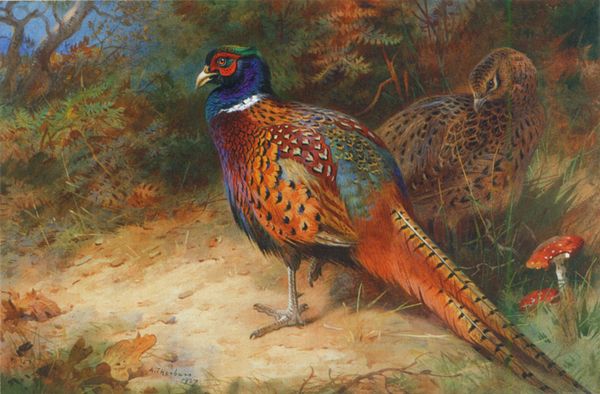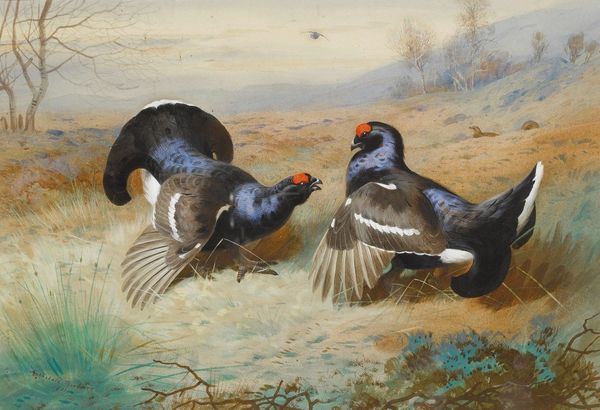
Copyright: Public Domain: Artvee
Editor: Archibald Thorburn’s “Blackgame,” painted in 1928, renders these birds with stunning detail. The crisp watercolor feels so vivid, like a captured moment in the Scottish Highlands. What do you see in the piece beyond the beautiful rendering? Curator: What I observe foremost is the distribution of light across the picture plane, defining forms with subtle gradations. Notice how the artist juxtaposes the dark plumage of the Blackgame against the muted browns and whites of the landscape. Editor: Yes, there's such a strong contrast there! Is there a kind of rhythm established between the figures? Curator: Indeed. The placement of each bird contributes to the painting's compositional balance. Consider the arrangement – how the positioning and direction of each bird's gaze generates a network of visual connections within the landscape. It echoes semiotic approaches towards art. Editor: So the birds are almost acting as signs, connecting to the landscape? Curator: Precisely. What is the nature of each gesture within its form and the symbolic relationship that these forms cultivate together? What kind of new meanings arise in its structure? Editor: That is a fascinating way to read this seemingly straightforward wildlife painting. I definitely appreciate the structure in a totally different way now! Curator: The analytical study of visual syntax enriches the viewing experience, and deepens our insights regarding pictoriality.
Comments
No comments
Be the first to comment and join the conversation on the ultimate creative platform.
